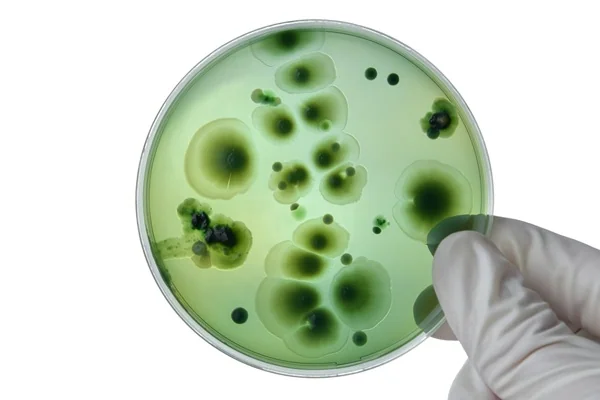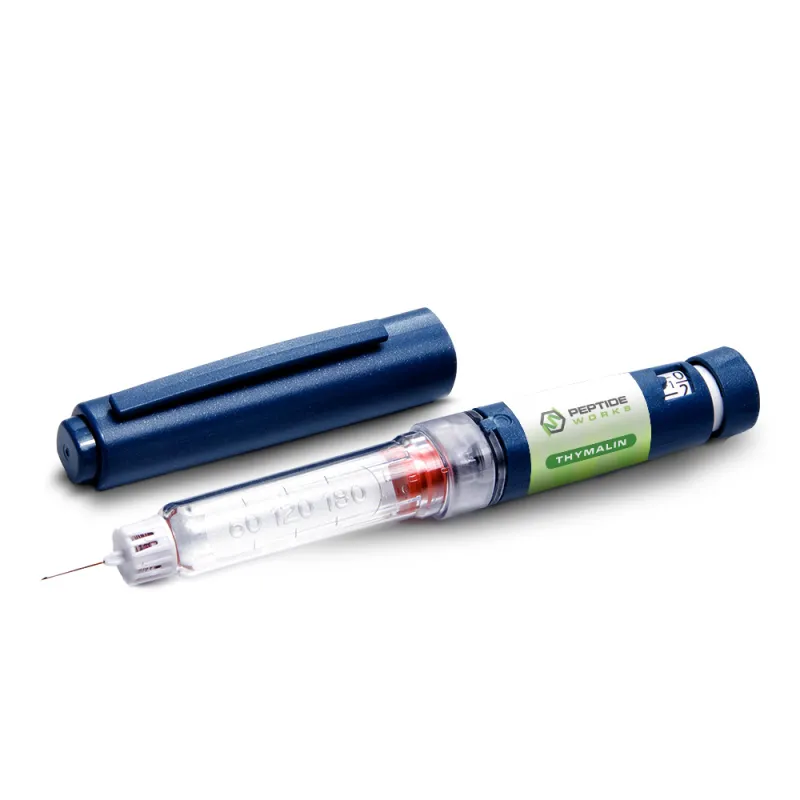
PROMO!
First order? Get 10% OFF with this code: 1storder
Written by

Fungal infections can be stubborn, often resisting common treatments and weakening the body’s defenses. In recent years, researchers have been paying close attention to Thymosin Alpha-1, commonly called TA1 Peptide, for the way it is being studied in relation to immune function TA1 Peptide has been linked in studies to improved immune signaling, which may help the body respond more effectively when faced with fungal challenges.
Unlike many compounds that only target the infection itself, TA1 Peptide seems to support the immune system by helping it identify and respond more effectively. This immune-focused approach makes it an intriguing subject for ongoing scientific exploration, especially as researchers continue to look for solutions to persistent fungal issues.
In this article, we’ll explore how TA1 Peptide is being studied in connection with fungal infections, why its immune-boosting role matters, and where other peptides such as Thymalin fit into the research picture.
Explore Thymosin Alpha-1 from Peptide Works, a thymic peptide that supports antifungal immunity and strengthens the body’s natural immune response.

TA1 Peptide interacts with dendritic cells and other immune cells that act as the body’s sentinels. In research, it has been shown to bind Toll-like receptors (TLR-2 and TLR-9), which switch on key signaling pathways such as NF-κB and MAPK.
This activation triggers the release of cytokines including IL-12, IFN-γ, and IL-2. These messengers guide immune cells to mount a stronger Th1-type response, which is important for clearing stubborn fungal organisms.
As one of the immunity peptides, TA1 improves how immune cells present antigens and communicate, making it harder for fungi to hide or overwhelm host defenses. Early studies also suggest that peptides like Thymalin may support immune balance, but TA1 appears more potent in enhancing antigen presentation and cytokine release, making it a key focus in fungal infection research.
Since these pathways rely heavily on signaling messengers, the next step is to examine the cytokines that drive antifungal activity.
When the body faces fungal organisms, cytokines guide the immune defense. Studies show TA1 Peptide helps raise levels of IL-12, IFN-γ, and IL-2. IL-12 signals T cells to release IFN-γ, which then activates macrophages and neutrophils to attack fungal cells. Other cytokines, such as TNF-α and IL-17, also play vital roles by boosting inflammation and attracting additional immune cells to the affected area.
Balance is essential. While pro-inflammatory cytokines fight fungi, unchecked signals may harm healthy tissue. That is why regulatory messengers like IL-10 step in to calm excess activity. TA1 Peptide appears to support this balance, making immune responses stronger but still controlled when fungi threaten.
This connection between cytokines and control of inflammation shows why balance is such a critical factor in fungal infections.

When fungi invade, inflammation is the body’s first defense. Signals such as IFN-γ and TNF-α call in immune cells to attack fungal organisms. But if this response becomes too strong, it can injure healthy tissues and slow recovery. If it is too weak, fungi spread unchecked, turning a small problem into a lasting infection.
Balance is the key, strong enough to fight fungi, controlled enough to protect the host. This is where peptides gain attention. Thymosin Alpha-1 Peptide helps push antifungal signals while also supporting regulators like IL-10, which keep inflammation in check. Thymalin, often studied for its role in restoring immune balance, may complement this effect by guiding lymphocyte activity.
Together, they highlight that fighting fungal infections is not only about stronger responses but also about keeping those responses under control. Once inflammation is balanced, the focus shifts to the immune cells that physically eliminate fungal threats.
Once immune signals are triggered, the fight depends on effector cells. Macrophages and neutrophils act first, engulfing fungal cells and releasing reactive oxygen species to break them down. Natural killer (NK) cells reinforce this attack by releasing cytotoxic proteins that damage fungal membranes.
Studies suggest Thymosin Alpha-1 (TA1 Peptide) strengthens these actions, giving innate defenses more power against persistent fungal threats. Adaptive immunity adds precision and memory. CD4+ helper T cells direct antifungal strategies, while CD8+ cytotoxic T cells eliminate infected host cells.
TA1 Peptide enhances these responses, making them more effective and sustained. Thymalin, known for guiding lymphocyte activity, may complement this by supporting T cell balance. Because Thymalin has repeatedly appeared as a complementary peptide, it is worth examining its role in antifungal defense in more detail.

Thymalin acts as an immune correction peptide, guiding cells to function in a more coordinated way. Findings suggest it may enhance macrophage activity, which allows these cells to engulf and break down fungal organisms such as Candida. It has also been linked to improved lymphocyte coordination, helping defenses remain effective under stress. These observations make Thymalin an interesting subject in antifungal research.
Researchers also examine how Thymalin may help limit inflammatory damage during fungal challenges. By promoting balance, it appears to protect tissues while keeping defenses active. This potential to fine-tune immune responses positions Thymalin as a complementary focus alongside TA1 Peptide in ongoing research.
Since both peptides influence antifungal responses differently, the natural question is whether they might work better when considered together.
Explore Thymalin from Peptide Works, an immune correction peptide that helps regulate immune balance and supports coordinated cellular defense.
TA1 Peptide and Thymalin are both thymic peptides, but they act on different layers of immunity. TA1 is studied for its ability to push antifungal defense by strengthening immune activation. Thymalin, in contrast, is linked to immune correction, helping maintain stability when responses risk becoming disorganized. Their functions do not overlap, which makes the idea of synergy appealing in research.
In fungal settings, strong signaling must be paired with balanced regulation. This is where the two peptides may complement each other: TA1 promotes sharper recognition of fungal threats, while Thymalin may support the fine-tuning needed to avoid excessive damage. Their combined study could provide broader insights into antifungal immunity.
Looking ahead, these ideas naturally lead to the bigger question of what the future may hold for TA1 Peptide in fungal research.
The future of antifungal research may be shaped by deeper study of TA1 Peptide. Its role in strengthening immune defense, supported by peptides like Thymalin, points toward fresh ways of approaching fungal challenges.
At Peptide Works, we support this progress by providing high-quality peptides for research worldwide. We believe ongoing discoveries will continue to open new insights into immune health, offering hope that future strategies may become more precise, effective, and sustainable in addressing fungal infections.
All products discussed are supplied for research purposes only and are not intended for human use.
[1] Dominari A, Hathaway Iii D, Pandav K, Matos W, et al. Thymosin alpha 1: A comprehensive review of the literature. World J Virol. 2020 Dec 15;9(5):67-78.
[2] Tao N, Xu X, Ying Y, Hu S, et al. Thymosin α1 and Its Role in Viral Infectious Diseases: The Mechanism and Clinical Application. Molecules. 2023 Apr 17;28(8):3539.
[3] Reddy GKK, Padmavathi AR, Nancharaiah YV. Fungal infections: Pathogenesis, antifungals and alternate treatment approaches. Curr Res Microb Sci. 2022 Apr 27;3:100137.
[4] Romani L, Puccetti P. Controlling pathogenic inflammation to fungi. Expert Rev Anti Infect Ther. 2007 Dec;5(6):1007-17.
[5] Caffrey AK, Obar JJ. Alarmin(g) the innate immune system to invasive fungal infections. Curr Opin Microbiol. 2016 Aug;32:135-143.
ALL CONTENT AND PRODUCT INFORMATION AVAILABLE ON THIS WEBSITE IS FOR EDUCATIONAL PURPOSES ONLY.
DISCLAIMER: These products are intended solely as a research chemical only. This classification allows for their use only for research development and laboratory studies. The information available on our Peptide Works website: https://peptide-works.com/ is provided for educational purposes only. These products are not for human or animal use or consumption in any manner. Handling of these products should be limited to suitably qualified professionals. They are not to be classified as a drug, food, cosmetic, or medicinal product and must not be mislabelled or used as such.
Peptide Works
Related Articles

How effective could Orexin Addiction Therapy be?
Have you ever wondered why some people find it so hard to stop addictive habits, even when they truly want

Can NAD Therapy Improve Cognitive Performance?
NAD Therapy is gaining attention in research for its possible role in brain health. NAD+ (nicotinamide adenine dinucleotide) is a

Enhancing Energy with NAD+ Supplements
Energy is the driving force behind focus, movement, and recovery. When cells have less energy to work with, the body